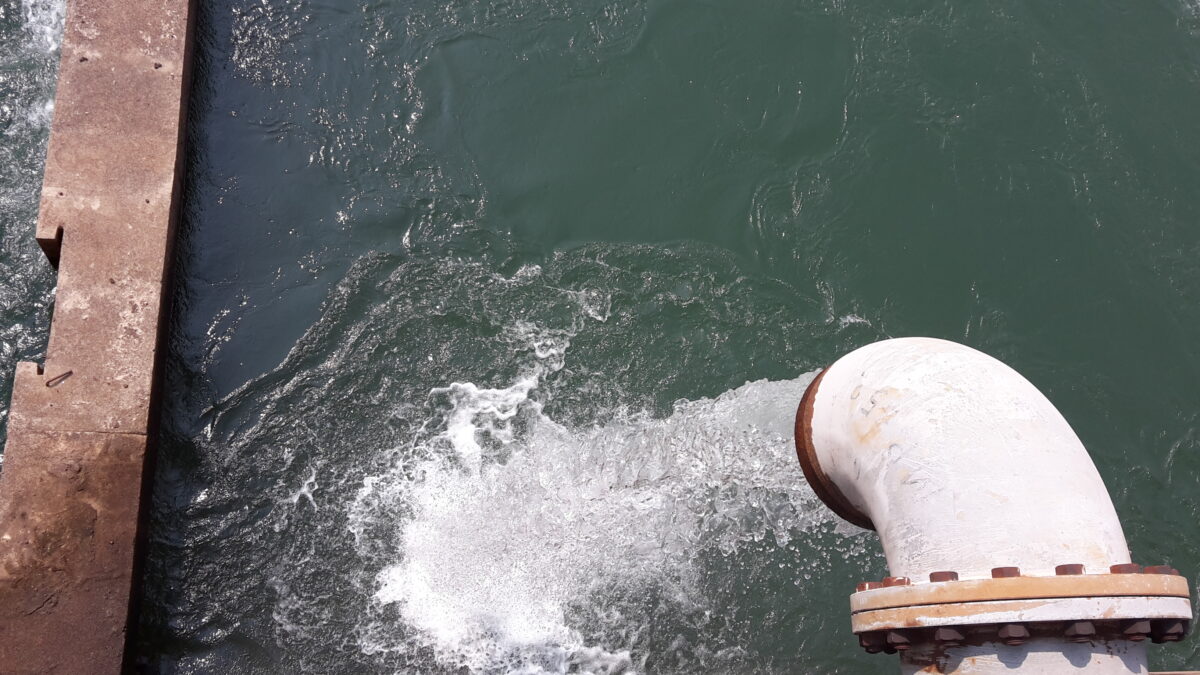Climate change drives regionally shifted variations in precipitation, which can cause flooding as well as water scarcity. Water management is becoming increasingly important to ensure a reliable supply of potable water and food production amid a changing climate.

Image: Reiner Lemoine Institute
A recent example of water mismanagement occurred in Montevideo, Uruguay, where a state of emergency was declared due to an extreme water shortage in the capital. The state of emergency permitted infrastructure to be extended in protected areas without social or environmental impact assessments. Lack of information raised questions regarding population impacts, the permanent character of infrastructure, water supply security, and compensation for livelihood losses.
The decision process in this emergency exemplified the role water crises can play in a climate-changed world, and should drive global efforts to reconsider water management plans. How will water resources develop? How should we assess current and future water availability for industrial-scale demand? What impact will the coupling of energy and water demand, through green hydrogen production, have and how can we start off well in the development of such projects?
Green hydrogen
With the Uruguayan crisis as an example, water use should be re-evaluated, improved, and planned with greater foresight. This includes in the development of industrial sites which will place additional water needs on top of the existing challenge of providing water for drinking and agricultural needs. Green hydrogen could play a central role in the energy transition as it could replace fossil fuels to decarbonize the industrial and transport sectors. In addition to renewable electricity, production of green hydrogen also requires water. As a minimum, the production of a kilogram of hydrogen requires 18 liters to 30 liters of water, depending on water quality.
Uruguay is a nation with great green hydrogen potential and an energy cooperation agreement has already been signed between the European Union and the South American state. Two hydrogen projects, spearheaded by German companies Enertrag and Linde, are already in the planning process. Additionally, the H2U project run by Uruguayan state-owned oil refinery ANCAP has identified the potential to generate 200,000 tons of green hydrogen per year for export, powered by offshore wind farms. Realizing that potential would translate to an estimated water demand comparable to that of a Google data center which was recently publicly contested as it would require the same amount of water as that consumed by 55,000 people.
This highlights that new projects should not exacerbate existing water scarcity. The economic development of project sites, including industries that might be attracted by hydrogen infrastructure, should be considered when estimating future water demand. It is imperative to require new industries to achieve a high degree of water recycling efficiency. Total water demand should then be compared to groundwater recharge rates, taking climate change into account.
Social impact
Water scarcity has high humanitarian impacts and it is important to consider these in decision-making processes. Structural concerns can also accompany international projects. Historically, large-scale extractive industries serving international markets have failed to redistribute profits to local populations while area-intensive facilities can lead to loss of ownership by communities, and “land grabbing.” Joint-benefit models that promise to fund community infrastructure such as schools and hospitals can result in an increased dependence on the new industries funding them. Nations which import the product created by such industries avoid the risks of resource extraction and depletion in their own backyard, externalising existing tensions.
These concerns likely also hold true for green hydrogen plants, which could certainly exacerbate water scarcity. Many nations with green hydrogen potential suffer, or have suffered, from the unjust power structures rooted in colonialism and it is crucial not to reinforce such situations. Green hydrogen projects should benefit importing as well as exporting countries. This should not be limited to economic benefits but should also take into account the needs and sustainable development goals of producing countries, for example in the field of energy.
To ensure sustainable project development, potential green hydrogen exporting and importing countries should be responsible for building capacity, expertise, knowledge, and awareness of the abovementioned concerns. Joint development legislation for green hydrogen production, transport, and trade should also serve the needs of all stakeholders. Taking into account social, environmental, and cultural aspects may take longer than the current top-down infrastructure planning approaches but would create greater acceptance of, and support for sustainable projects.
Given the potential for international water-intensive projects, including green hydrogen plants, to increase water scarcity, policy makers and project developers should take the following actions.
Consider climate change effects in environmental impact assessments (EIAs): Independent EIAs, including for water use, must be mandatory for green hydrogen projects and should be considered in combination with other water users. Projects that can be expected to lead to reduced climate or other environmental resilience in a region should be excluded from state or international funding.
Ensure sustainable project implementation based on participation: Impact assessments should include local voices and the regulatory process should empower civil society to participate in decision making. This can ensure social aspects and opinions are fully considered rather than being given lip service to avoid public opposition.
Prioritise water management and hydrogen use for local populations and essential industries: While Uruguay has a right to water access in its constitution, other countries need to follow suit. Local water use and hydrogen application should be prioritised over export goals.
Foster research interaction with green hydrogen partnership countries: While the European Union is the largest research funding donor globally, only limited resources go to middle-income countries. With a green hydrogen partnership with Uruguay on the horizon, it is important to support bilateral research. Joint research between exporting and importing countries is key to shaping sustainable implementation of green hydrogen partnerships.
About the authors: Katrin Lammers works at the Reiner Lemoine Institute and Martha Hoffmann is part of the Reiner Lemoine Foundation Graduate School and receives a scholarship from Reiner Lemoine Foundation for her PhD studies. Backed by the Reiner Lemoine Foundation, the Reiner Lemoine Institute is an independent non-profit research institution that contributes to a transformation towards a sustainable energy supply based on 100% renewable energy. Tamara Avellán is a lecturer at the University of Oulu where she researches sustainable water and nutrient retention practices in agriculture. Maria Paula Collazo has a doctorate in hydrogeology and is a professor of groundwater at University of the Republic, in Uruguay.
The views and opinions expressed in this article are the author’s own, and do not necessarily reflect those held by pv magazine.
This content is protected by copyright and may not be reused. If you want to cooperate with us and would like to reuse some of our content, please contact: editors@pv-magazine.com.



There is no problem. Renewable energy can convert sea water into potable water and hydrogen grade water. The cost of renewable energy is going to drop further. Once you have hydrogen you have the solution to all problems in our planet. You should initially fund the technology until it gets rolling.
Seems odd that large amounts of sea water cant be pumped high up hills and allowed to evaporate while running back down, depositing the salt and allowing the wind to carry the pure water to a mountain to be rained backdown into the river systems, where it can be redistributed,
The salt can be collected and processed every year or so, and sold or dumped back into the sea.